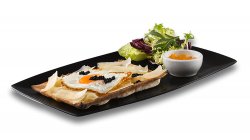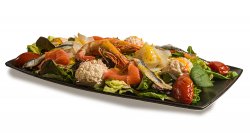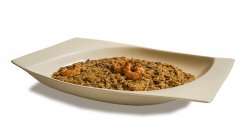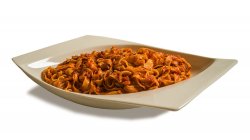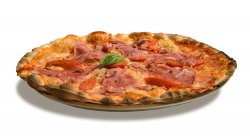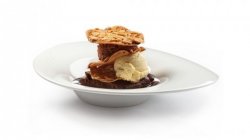

Welcome to Milan!
Owing to its history and influence on Italy's socio-cultural landscape, it is considered one of Italy's most iconic cities. Welcome to Milan!
Archaeological surveys in the 19th century have found that Milan, the capital of the Lombardy region, began as a small village that grew and became powerful over time. The Celtic origin of its name, Medhelan, "sacred city", perfectly describes this place, which was naturally rich and blessed owing to its geographical location. The story of Belloveso and Galos Biturgi, founders of the Lombard capital, brings to mind images of a fertile and productive land, capable of supplying food to a large population.
Although little is known of Celtic Milan or Mediolanum, the first Roman Milan, archeology diggings have unearthed huge food stores and warehouses. Moreover, despite the lack of access to the sea, the provision of fish was never a problem, obviously from the local rivers. Some sources argue that Milan already had a fish market in the 12th century, where fish was sold according to their size. However, Milan was not immune to the famines and wars that characterized the 16th and 17th centuries, despite its flourishing society. Due to the devastating shortage of raw materials, the Milanese were forced to leave the fields and turn to polenta, a cereal- and corn-based flour, for their salvation. This popular dish, which has survived until our days, helped the Milanese overcome famine. On the other hand, it also was responsible for the pellagra, a disease caused by vitamin deficiency.
The introduction and cultivation of rice in the mid-15th century turned around the situation, and changed the eating habits of the Milanese. The works incentivized by the wealthy Visconti and Sforza families, whom history remembers as the noblemen and "owners" of the city, increased productivity. Milan gradually became the world-class economic and trade hub that we know today, thanks to the economic momentum and well-being fostered by the Sforza family.
Despite its openness to new trends, whether in fashion or cultural, what lies at the heart of Italy's current financial capital is a humble culinary tradition. In fact, Ambrosian cuisine, as it is known in honor of Sant'Ambrogio, the city's patron saint, is a humble, peasant cuisine in which vegetables and pork or beef is cooked in butter. However, Milanese cuisine is influenced by many cultures, most of which share a love for different meats, juicy entrails and other offal. Indeed, the nickname of the Milanese, "busecconi", which in local dialect means potbellied, derives from the use of these ingredients in the cuisine. Furthermore, Milan shares some culinary tradition dishes with Austrian cuisine. For instance, the famous "cotoletta", a fried beef steak breaded with breadcrumbs, garlic and parsley, was originally from the city of Vienna; while the "michetta" bread takes its name from the Austrian Kaisersemmel bread, also known as "micca". Another beloved recipe is the "cassoeula" of Spanish origin. It is made with pork offal, ribs, rind, ears, shank, etc., cooked with cabbage. In essence, the recipe includes all the ingredients rejected by the aristocrats. However, the world famous Risotto allo Zafferano (saffron) reigns supreme in all Milanese homes. Legend has it that, in the mid-1500s, a Belgian commune led by Valerio di Fiandra lived at the Fabbrica del Duomo. The painters were contracted to depict the life of Santa Elena on the church's windows. One of the disciples, a very gifted young man, managed to impress the master thanks to the colors obtained using saffron. Therefore, on the master glazier’s wedding day, the disciple convinced the cooks to add saffron to the rice and serve it to the guests. The success of the dish was so notable that Risotto allo Zafferano has become, since then, a staple of Milanese cuisine.
Almost as famous and notorious is the Panettone. This typical Christmas dessert is a traditional indulgence that Italians cannot do without. Just like other famous recipes, Panettones is shrouded with legends. The best known is about chef Ludovico il Moro who burnt the dessert he was preparing for the sumptuous Christmas dinner he was cooking for the most important noblemen of the court of Milan. His assistant, Toni, offered him the dish he had been cooking with leftovers: a bread made with eggs, flour, butter and some raisins. The chef, having no other choice, decided to take the risk and serve the dessert to the lords. It was so enthusiastically received that when he was asked what the name of the cake was, Ludovico replied: “L'è 'l pan del Toni”, that is “Toni's bread”, Another legend revolves around a priest and a woman who visited him during Christmas to have the Father bless the dessert she had made. After each prayer, the priest would take a generous bite of the cake until he had eaten it all. The day the woman came back to pick up her dessert, which coincided with the festivity of Saint Blaise, on February 3rd, the priest was so ashamed of what had happened that he prayed for the saint's pardon. Saint Blaise, who was always compassionate towards humanity's woes and petty sins, gave him a bigger, tastier cake full of raisins. Since then, it is a typically Milanese custom to save a slice of Panettone from Christmas, and eat it with the whole family for breakfast on February 3. This action symbolizes a gesture against the sin of gluttony and sore throats and colds. Furthermore, the shops in the city sell Saint Blaise's Panettones at a significantly cheaper price.
Leaving behind the capital of Lombardy and its shops, we continue through the countryside and discover truly amazing lakes and mountain landscapes. It is in these valleys of Valcamonica and Valtellina that the hearty recipes of Lombard cuisine originated. This is the case of pizzoccheri, a short pasta made with buckwheat flour and butter, served with potatoes and cabbage. The polenta, which is also highly valued in other Italian regions, is made from cereal and corn flour, and considered the food of the poor... or not! If polenta is served as an "orphan", that is without any seasoning, it is considered a humble meal. Conversely, if it is served with melted Gorgonzola cheese, mushrooms and sausage, it becomes a treat! By the way, they usually eat it on Fridays in Milan. Milan offers endless culinary, cultural and leisure offers. Its rich past of rituals and customs are more fashionable now than ever. This is why, our next blog will focus on the true story of Milanese Aperitif!
45.4654219, 9.1859243
Milán
The capital of the province of Milan and Lombardy is the largest city in northern Italy and the second most populous. Located in the Po Valley, it is one of the most developed Italian regions.
City: 1.345.890 hab.
Surface area: 181,76 kmª
Categories
